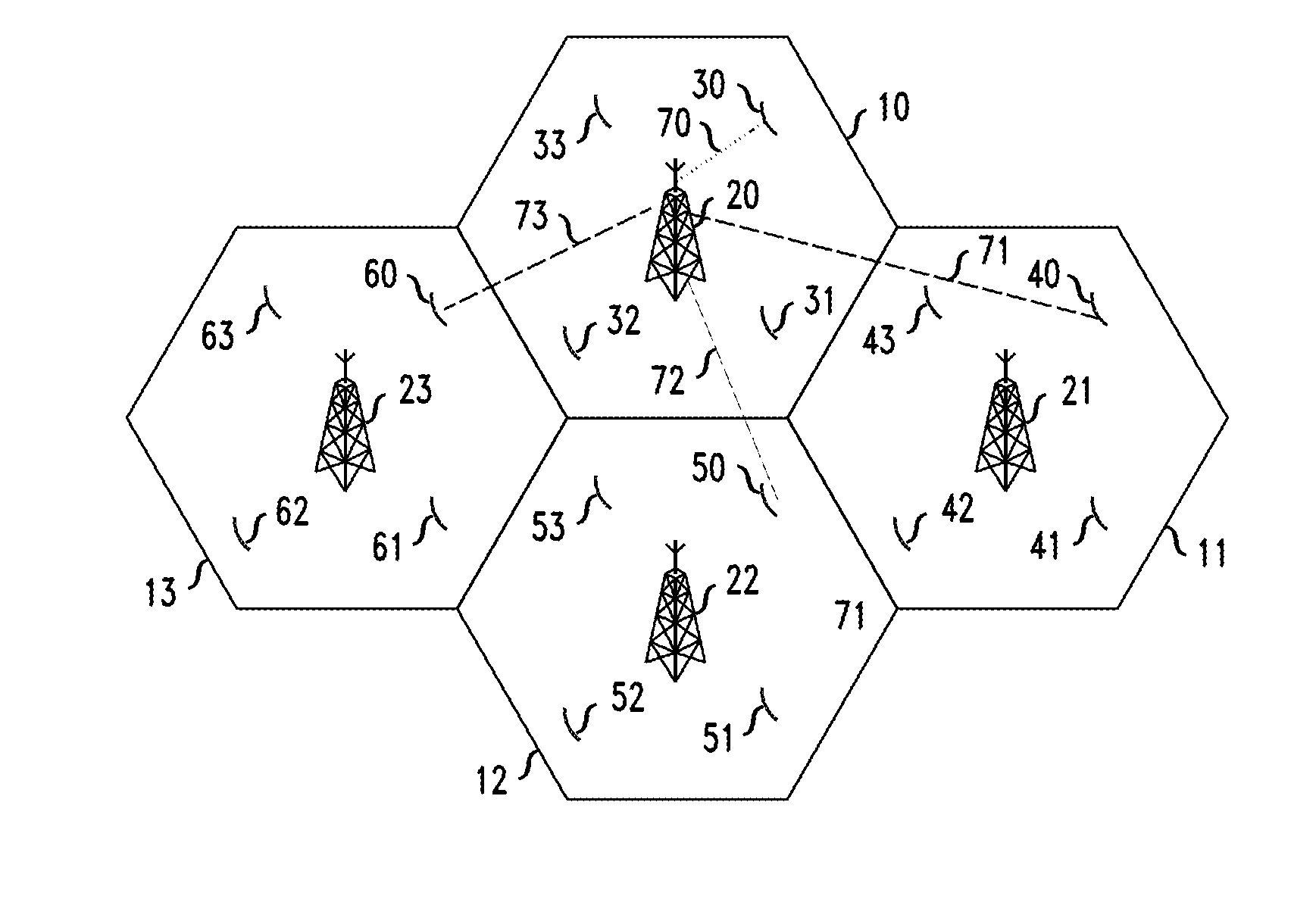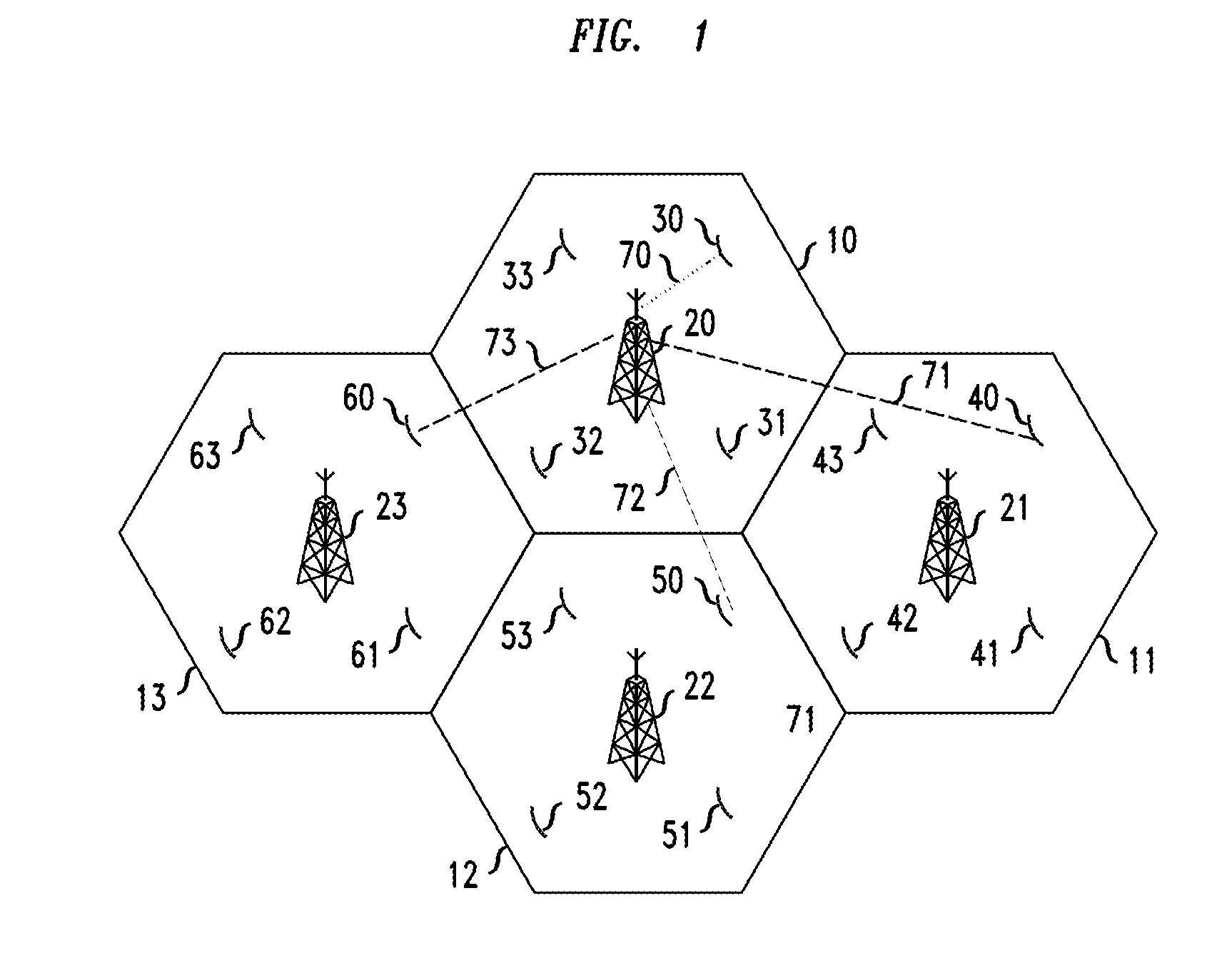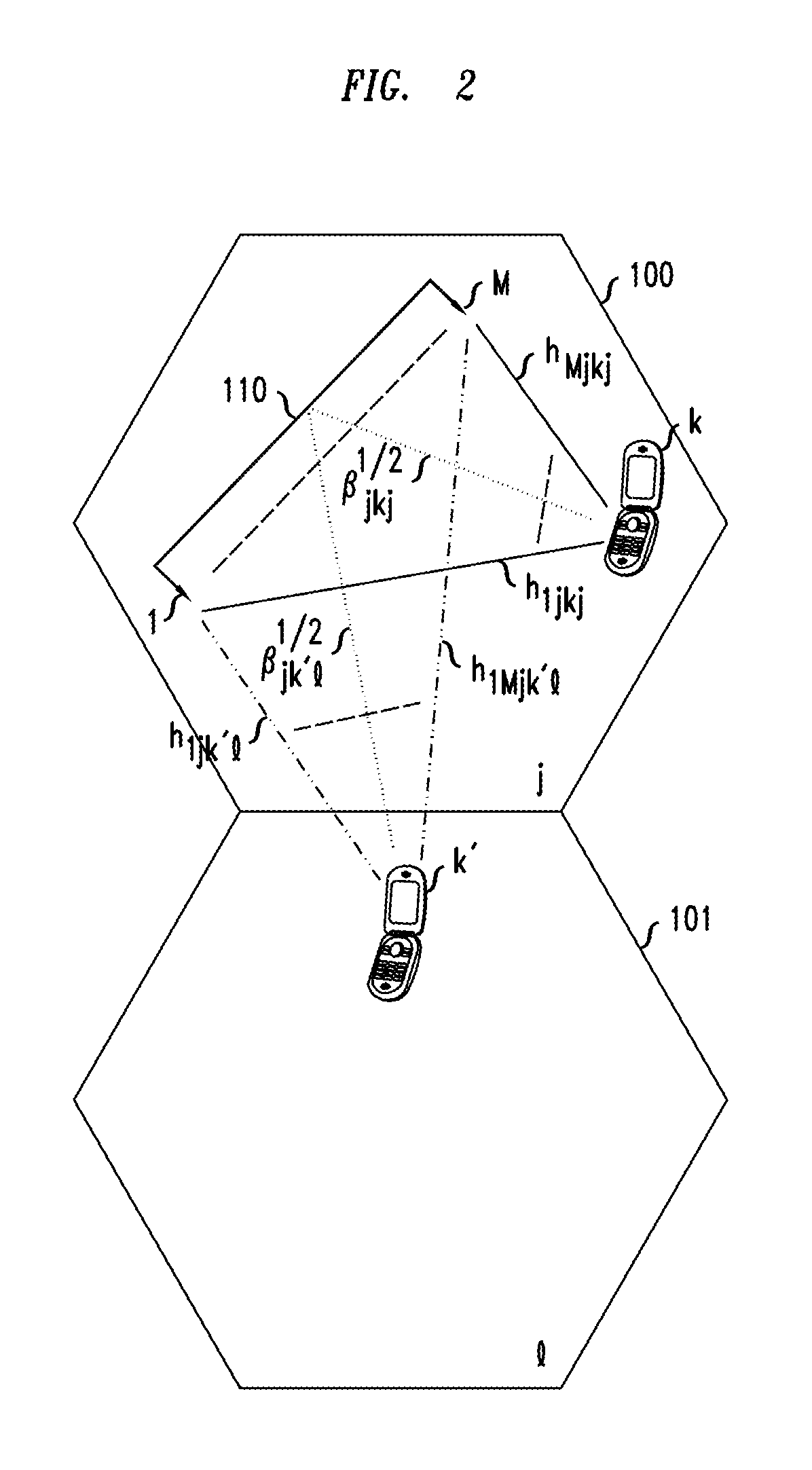Method And Apparatus For Power Optimization In Wireless Systems With Large Antenna Arrays
a technology of antenna arrays and wireless systems, applied in the field of methods and systems of wireless communication, can solve the problems of disfavored forward-link power allocation algorithms, algorithm may be too slow to track the evolution of propagation channels,
- Summary
- Abstract
- Description
- Claims
- Application Information
AI Technical Summary
Benefits of technology
Problems solved by technology
Method used
Image
Examples
Embodiment Construction
[0029]In the following discussion, the term “message” means the whole or any portion of a body of data to be transmitted. A message may be encoded in the form of one or more symbols, each symbol having an information content of one or more binary bits. The term “module” means any specialized circuit or combination of circuits, or any set of instructions recorded in a machine-readable memory, together with general-purpose or special-purpose circuitry capable of carrying out the recorded instructions.
[0030]A message-carrying signal transmitted from a base station antenna array during one channel use interval is referred to here as a “symbol”. A symbol is distributed in space and frequency, because each base station has multiple antennas for transmission, and because each symbol will typically be distributed over multiple OFDM subcarriers or “tones”.
[0031]The term “antenna” refers to a base station antenna associated with a cell. Each cell has at most M antennas. The term “terminal” re...
PUM
 Login to View More
Login to View More Abstract
Description
Claims
Application Information
 Login to View More
Login to View More - R&D
- Intellectual Property
- Life Sciences
- Materials
- Tech Scout
- Unparalleled Data Quality
- Higher Quality Content
- 60% Fewer Hallucinations
Browse by: Latest US Patents, China's latest patents, Technical Efficacy Thesaurus, Application Domain, Technology Topic, Popular Technical Reports.
© 2025 PatSnap. All rights reserved.Legal|Privacy policy|Modern Slavery Act Transparency Statement|Sitemap|About US| Contact US: help@patsnap.com



